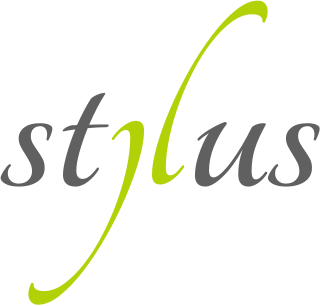
JavaScript, often abbreviated as JS, is a programming language and core technology of the Web, alongside HTML and CSS. 99% of websites use JavaScript on the client side for webpage behavior.
An HTML element is a type of HTML document component, one of several types of HTML nodes. The first used version of HTML was written by Tim Berners-Lee in 1993 and there have since been many versions of HTML. The current de facto standard is governed by the industry group WHATWG and is known as the HTML Living Standard.
Selenium is an open source umbrella project for a range of tools and libraries aimed at supporting browser automation. It provides a playback tool for authoring functional tests across most modern web browsers, without the need to learn a test scripting language. It also provides a test domain-specific language (Selenese) to write tests in a number of popular programming languages, including JavaScript (Node.js), C#, Groovy, Java, Perl, PHP, Python, Ruby and Scala. Selenium runs on Windows, Linux, and macOS. It is open-source software released under the Apache License 2.0.
A CSS hack is a coding technique used to hide or show CSS markup depending on the browser, version number, or capabilities. Browsers have different interpretations of CSS behavior and different levels of support for the W3C standards. CSS hacks are sometimes used to achieve consistent layout appearance in multiple browsers that do not have compatible rendering. Most of these hacks do not work in modern versions of the browsers, and other techniques, such as feature support detection, have become more prevalent.

The Yahoo! User Interface Library (YUI) is a discontinued open-source JavaScript library for building richly interactive web applications using techniques such as Ajax, DHTML, and DOM scripting. YUI includes several cores CSS resources. It is available under a BSD License. Development on YUI began in 2005 and Yahoo! properties such as My Yahoo! and the Yahoo! front page began using YUI in the summer of that year. YUI was released for public use in February 2006. It was actively developed by a core team of Yahoo! engineers.
Haml is a templating system that is designed to avoid writing inline code in a web document and make the HTML cleaner. Haml gives you the flexibility to have some dynamic content in HTML. Similar to other template systems like eRuby, Haml also embeds some code that gets executed during runtime and generates HTML code in order to provide some dynamic content. In order to run Haml code, files need to have a .haml extension. These files are similar to .erb or .eRuby files, which also help embed Ruby code while developing a web application.

Cascading Style Sheets (CSS) is a style sheet language used for specifying the presentation and styling of a document written in a markup language such as HTML or XML. CSS is a cornerstone technology of the World Wide Web, alongside HTML and JavaScript.

Google Closure Tools is a set of tools to help developers build rich web applications with JavaScript. It was developed by Google for use in their web applications such as Gmail, Google Docs and Google Maps. As of 2023, the project had over 230K LOCs not counting the embedded Mozilla Rhino compiler.
CoffeeScript is a programming language that compiles to JavaScript. It adds syntactic sugar inspired by Ruby, Python, and Haskell in an effort to enhance JavaScript's brevity and readability. Specific additional features include list comprehension and destructuring assignment.

Less is a dynamic preprocessor style sheet language that can be compiled into Cascading Style Sheets (CSS) and run on the client side or server side. Designed by Alexis Sellier, Less is influenced by Sass and has influenced the newer "SCSS" syntax of Sass, which adapted its CSS-like block formatting syntax. Less is an open source project. Its first version was written in Ruby; however, in the later versions, use of Ruby has been deprecated and replaced by JavaScript. The indented syntax of Less is a nested metalanguage, as valid CSS is valid Less code with the same semantics. Less provides the following mechanisms: variables, nesting, mixins, operators and functions; the main difference between Less and other CSS precompilers is that Less allows real-time compilation via less.js by the browser.
Dart is a programming language designed by Lars Bak and Kasper Lund and developed by Google. It can be used to develop web and mobile apps as well as server and desktop applications.
In software development, a polyfill is code that implements a feature of the development environment that does not natively support the feature. Most often, it refers to JavaScript code that implements an HTML5 or CSS web standard, either an established standard on older browsers, or a proposed standard on existing browsers. Polyfills are also used in PHP and Python.
Foundation is a free responsive front-end framework, providing a responsive grid and HTML and CSS UI components, templates, and code snippets, including typography, forms, buttons, navigation and other interface elements, as well as optional functionality provided by JavaScript extensions. Foundation is an open source project, and was formerly maintained by ZURB. Since 2019, Foundation has been maintained by volunteers.

Stylus is a dynamic stylesheet preprocessor language that is compiled into Cascading Style Sheets (CSS). Its design is influenced by Sass and Less. It is regarded as the fourth most used CSS preprocessor syntax. It was created by TJ Holowaychuk, a former programmer for Node.js and the creator of the Luna language. It is written in JADE and Node.js.
Tritium is a simple scripting language for efficiently transforming structured data like HTML, XML, and JSON. It is similar in purpose to XSLT but has a syntax influenced by jQuery, Sass, and CSS versus XSLT's XML based syntax.

Hampton Lintorn-Catlin is an American computer programmer, programming language inventor, gay rights advocate, and author, best known as the creator of the Sass and Haml markup languages. Hampton was a Vice President of Engineering at Rent the Runway, and has previously held similar roles at Moovweb, Wordset, and at the Wikimedia Foundation. He is currently Chief Technology Officer at Thriveworks.

PostCSS is a software development tool that uses JavaScript-based plugins to automate routine CSS operations. It was designed by Andrey Sitnik with the idea taking its origin in his front-end work for Evil Martians.
This is a list of articles related to the JavaScript programming language.








